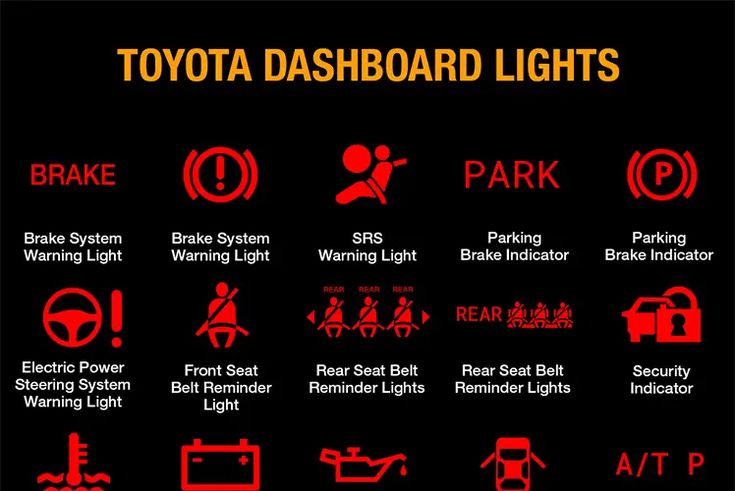The dashboard of a Toyota Camry is more than just a decorative panel; it serves as a vital communication interface between the vehicle and the driver. Each indicator light that blossoms into visibility offers crucial insights into the car’s operational status. Ignoring these illuminated warnings could lead to dire consequences. Understanding what each light signifies empowers drivers to take informed measures, ensuring safety, enhancing performance, and prolonging the longevity of the vehicle.
When one ventures into the intricacies of dashboard symbols, they might encounter lights that can evoke a sense of trepidation. The check engine light, for instance, is perhaps one of the most dreaded symbols on any dashboard. This light doesn’t merely hint at an incidental issue; it beckons immediate attention. While it may suggest something as commonplace as a loose gas cap, it could also indicate a more severe malady that warrants professional scrutiny. Thus, when the check engine light glimmers, it’s prudent to discern the underlying cause without delay.
Another notorious symbol is the oil pressure warning light. Your engine relies on proper oil circulation to function seamlessly. When this light appears, it is a pronounced signal that immediate corrective action is necessary. Ignoring it could exacerbate engine strain, potentially leading to catastrophic mechanical failures. Regular oil changes and maintenance checks can mitigate such risks and keep the engine purring like a well-tuned instrument.
The battery warning light is equally significant. This indicator not only reveals issues with the battery itself but may also point to complications with the alternator or the vehicle’s charging system. A flickering battery light might suggest that your car’s electrical components could soon falter. In an age where electrical systems reign supreme, understanding this warning is paramount.
Next, we arrive at the temperature warning light, which serves as a guardian of your engine’s health. When this light ignites, it indicates that the engine is operating at dangerously high temperatures. This could lead to overheating, which in turn can cause irreversible engine damage if left unaddressed. Ensuring a keen eye on coolant levels and radiator functionality enhances your engine’s longevity and efficiency.
Equally pivotal is the brake warning light, an unmistakable indicator that should never be taken lightly. Not only does this signal a myriad of potential brake system issues, such as low brake fluid or worn brake pads, but it can also indicate an engaged parking brake. Should this light illuminate during regular driving conditions, a comprehensive inspection should follow immediately to safeguard against unpredictable braking failures.
In newer models, more advanced dashboard alerts have emerged, including the lane departure warning light and adaptive cruise control lock indicators. These lights are essential in today’s automotive landscape, where technology significantly enhances driving safety through proactive measures. The lane departure warning light assists in maintaining proper highway alignment, while the adaptive cruise control indicator ensures the vehicle responds appropriately to changing traffic patterns ahead.
This contextual importance of dashboard lights also extends to the tire pressure warning light. Recognizing the benefits of optimal tire pressure cannot be overstated. Tires that are properly inflated enhance fuel efficiency, promote better handling, and extend tire life. Thus, when the tire pressure light appears, it’s pertinent to check the air pressures promptly.
Moreover, the traction control light serves a dual purpose, revealing to the driver when the system is actively intervening to prevent wheel slip and assisting in maintaining vehicle stability during adverse road conditions. Knowing when this light activates encourages safe driving practices in unfavorable weather, thereby preventing accidents.
Of course, no discussion of dashboard lights is complete without addressing the seatbelt warning light. This simple yet effective reminder encourages compliance with safety standards, ensuring that occupants buckle up before embarking on their journey. Ignoring this light not only exposes drivers and passengers to danger but also violates fundamental traffic safety regulations.
Every driver should prioritize familiarization with the intricate symphony of symbols adorning the dashboard. The more one understands, the less daunting they become. The Toyota Camry is equipped with a plethora of indicators that aid in discerning necessary actions, which can transform a potentially problematic situation into an easily manageable one.
To ensure optimal vehicle performance, periodic preventive maintenance significantly outweighs reactive repairs. Regularly checking fluid levels, conducting tire rotations, and inspecting brake systems are just a few practices that can preempt unnecessary dashboard alerts. Furthermore, investing in a vehicle-specific owner’s manual can serve as an invaluable resource, providing detailed explanations and troubleshooting advice tailored to your Camry’s dashboard lights.
In summation, the dashboard of a Toyota Camry is a window into the vehicle’s operational health. By understanding the implications of each light that flickers to life, drivers can take the reins in managing their vehicle’s care and performance effectively. Ultimately, this knowledge not only enhances the driving experience but ensures that each journey unfolds with confidence and serenity. Remember, in the world of automotive care, awareness is your best ally.
